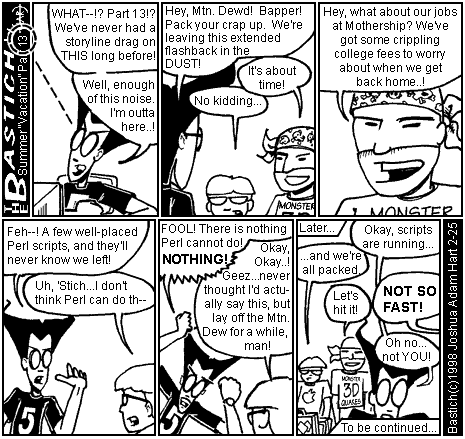Understanding sed and Perl One-Liners: Versatile Tools for Text Processing
In the world of text processing and system administration, two powerful tools, sed and Perl one-liners, stand out for their versatility and efficiency. These tools enable users to perform complex text manipulations with minimal effort and maximum speed, making them indispensable for anyone working with Unix-like systems.
What is sed?
sed stands for Stream Editor and is a Unix command-line utility for parsing and transforming text. It operates on text streams (such as files or input piped from another command) and applies a sequence of editing commands to them. Unlike full-fledged text editors like vim or nano, sed is non-interactive and designed for use in scripts and automation.
Key Features of sed
Stream Processing: Processes text line by line, making it efficient for handling large files.
Pattern Matching: Uses regular expressions to match patterns in text.
Text Substitution: Replaces matched patterns with specified content.
Non-Destructive Editing: By default, changes are displayed on the output without modifying the original file.
Integration: Can be used in pipelines with other Unix tools like
grep,awk, andsort.
Common sed Commands
Substitute (
s):
sed 's/old/new/' file.txt
This replaces the first occurrence of "old" with "new" in each line of
file.txt.Global Substitute (
s/.../g):
sed 's/old/new/g' file.txt
Replaces all occurrences of "old" with "new" in each line.
Delete Lines (
d):
sed '/pattern/d' file.txt
Removes lines containing "pattern".
Print Lines (
p):
sed -n '/pattern/p' file.txt
Prints only the lines matching "pattern".
In-Place Editing:
sed -i 's/old/new/g' file.txt
Modifies the file directly.
Example: Remove Empty Lines
sed '/^$/d' file.txt
This removes all blank lines from file.txt.
What are Perl One-Liners?
Perl one-liners leverage the powerful features of the Perl programming language for concise, on-the-fly text manipulation. They are called "one-liners" because the entire script fits in a single command line. Perl's rich set of built-in functions and support for regular expressions makes it ideal for tasks that go beyond the capabilities of simpler tools like sed.
Key Features of Perl One-Liners
Advanced Regular Expressions: Perl supports complex pattern matching and substitution.
Built-in Functions: Provides functions for file handling, arithmetic, and string manipulation.
Flexibility: Can handle multi-line operations, unlike
sedwhich works line-by-line.Cross-Platform: Works on Unix-like systems, Windows, and macOS.
Common Perl One-Liners
Substitute Text:
perl -pe 's/old/new/' file.txt
Substitutes "old" with "new" for each line in
file.txt.Print Matching Lines:
perl -ne 'print if /pattern/' file.txt
Prints lines containing "pattern".
Remove Blank Lines:
perl -ne 'print unless /^$/' file.txt
Skips printing blank lines.
Replace Multiple Patterns:
perl -pe 's/foo/bar/g; s/baz/qux/g' file.txt
Replaces "foo" with "bar" and "baz" with "qux" globally in each line.
Number Lines:
perl -pe '$_ = "$. $_"' file.txt
Adds line numbers to each line in
file.txt.
Example: Find and Replace with Perl
perl -i -pe 's/old/new/g' file.txt
This replaces all occurrences of "old" with "new" in file.txt and edits the file in place.
When to Use sed or Perl One-Liners
Use
sed:When the task is simple and involves line-by-line processing.
For substitutions, deletions, or text transformations in pipelines.
Use Perl One-Liners:
For tasks that require more complex logic, multi-line processing, or advanced pattern matching.
When additional Perl functions (e.g., arithmetic or data structures) are needed.
Conclusion
Both sed and Perl one-liners are powerful tools for text processing, each with unique strengths. While sed excels in simplicity and speed for straightforward tasks, Perl one-liners provide unparalleled flexibility for more complex operations. Mastering these tools empowers users to efficiently automate text processing and data manipulation tasks, making them indispensable in scripting and system administration.


